Strong communication is imperative. Especially in a work environment, understanding the right and not-so-right ways of communicating helps us successfully collaborate, bring alignment to departments, and build a positive workplace.
When it comes to work, we spend a lot of our time talking. According to the 2024 State of Business Communication report from Grammarly and the Harris Poll, people spend 88% of their workweek communicating with each other and 84% of leaders are communicating in more channels than ever before. Especially in a workplace where there’s so many different ways to communicate and goals on the line, effective communication is one of the most powerful skills to have.
We’re going to dive into the world of business communication and look at why it’s so important to get it right. Whether you’re working with a coworker on a project, a manager overseeing a team, or talking to customers or external parties, effective business communication is how you’ll successfully reach your end goal.
What is business communication?
Let’s start with the basics: what exactly is business communication? In short, business communication is the sharing of information within or by an organization. Whether you’re talking to a colleague about a project status, sending out a newsletter to customers, or getting the word out about an HR change to the entire company, these scenarios are some of the many that fall under business communication.
There’s many types of business communication, which makes it a large and varied medium. A message to external stakeholders will require very different language than one for colleagues in a team group chat. Nailing the right tone and use of language is key to maintaining a company’s professional brand voice.
Why do we need good business communication?
The majority of successful organizations prioritize internal communication. When communication is effective, there’s less business silos and stronger employee productivity, which ultimately results in an engaged and aligned workforce. Effective business communication trickles down to all areas in a business, from how news is shared throughout the organization, how teams work together, and how the business communicates to customers.
We all know how to communicate (though communication skills need to be developed, just like any other!), but business communication is not a one-size-fits-all affair. We need business communication to help fulfill several key tasks:
Share information
One of the main purposes of internal business communication is to share information between employees and teams within a company. This includes the technology used to distribute information, how managers communicate to their teams, and how high level updates are shared with everyone. Using a platform like a company intranet, employees can easily be notified with announcements and updates without losing details. When communication is properly upheld, everything should be kept in one place so nothing slips between the cracks.
Maintain consistent messaging
Messaging needs to be consistent across all platforms. Whether it is internal or external, going from staff to customers or management to employees, different messaging will only cause confusion. Having guidelines and a clear corporate communications strategy in place helps ensure that all communications maintain uniformity.
Improve clarity
Again, mixed messaging can result in confusion. When you have a piece of information missing, or one person saying one thing and someone else another, there is no clarity, only confusion, misalignment, and communication gaps. With set rules and an understanding of how business communication should be conducted, everyone can feel much clearer about their path forward.
Examples of business communication
So, what are actual real-life examples of business communication? Regardless of what your role is or what industry you work in, employees experience some form of internal business communication everyday! Here’s some scenarios:
1. Internal communication
Internal communication is any interaction or discussion that occurs between employees working under the same company. Even if you are in different departments, offices, or continents, sending an email or memo to each other is classed as internal communication.
2. External communication
External communication is the interaction between employees and the business’s customers, stakeholders, and the general public. Basically, if you are communicating with anyone who is not employed by your business, regardless of whether they are spending money or have invested interest in your brand, this is external business communication.
3. Upward communication
Upward communication is when a message is sent by one employee to someone above them in the company’s structure. For example, a direct report can email their manager with a project status update, or a manager may deliver an update on their team’s performance in the last quarter to an executive board.
4. Downward communication
Unsurprisingly, downward communication is the opposite of upward communication. If a manager needs to get in touch with their team, or if the company CEO decides to hold a town hall where they pass on information or announcements to everyone, downward communication is taking place.
5. Lateral communication
Upward and downward communication is pretty self-explanatory, and lateral communication fills in the gap. If two employees are in equal standing in a company, any messages and information shared between them could be considered lateral communication. Whenever you hop on a call to think through a problem with a colleague, you may be communicating laterally!
6. One-to-one communication
One-to-one communication occurs when two people are having a conversation. Hierarchy does not come into play here; one-to-one communication could look like a manager delivering feedback after a performance review, or it could be an employee checking in with their colleague for a hand-over before a vacation.
7. Written communication
Written communication is anything that is conveyed through text. It could be an email, a blog, a report, or even a little hello message on an intranet’s homepage. Written communication is the bread and butter of business communication, especially in today’s modern world where you can compose and send a message to someone on the other side of the world in seconds.
8. Verbal communication
We all use verbal communication every day. Ordering a beverage at your favorite coffee spot, saying hi to your neighbors when you pass them on the street, and even jumping on a call with colleagues requires talking and communicating verbally. Verbal communication will sometimes see you sitting down to talk through a big problem with your team and collaborate for a solution, but sometimes it can be sociable and just a way to pass the time.
9. Visual communication
Visual communication is the imagery you use to convey messages. Though they may be used alongside verbal or written components, such as videos or infographics, they can technically stand on their own if the messaging is clear enough. They can also be used to bring further clarity to written communication, such as including icons in a menu option on a website to help with navigation.
What business communication channels can we use?
There’s many types of business communication and its important to make sure that we are using the right channel for the right situation. In doing so, we can make sure that all communication is funneled into the correct location and that nothing is left behind. It is far too easy to mention something in one location and then follow it up in another. The problem with all too common situations like this is that the messaging is scattered and it can be hard to collaborate cohesively. Establishing which channels to use for specific communication is a must.
1. Face-to-face communication
Face-to-face conversations can cover a variety of topics. They can be as simple as chats in passing as you move around the office or could be a series of formal meetings to discuss a candidacy for a role or a performance review.
Ideally, face-to-face communication takes place in person. But, let’s be real, in today’s modern world of business, we don’t always have to be in the same room to have a face-to-face conversation with someone.
The main issue with face-to-face communication is that details can be forgotten or misremembered. It is best if some form of written communication quickly follows the conversation so both parties can confirm the details of the discussion.
2. Written communication
Written communication can encompass many mediums. We don’t send many letters on company stationery nowadays, but that doesn’t mean that there isn’t any written communication going on. Emails and social media posts have become two of the biggest forms of a company’s external communication methods. Internally, emails are also big but are joined by chat functions such as Microsoft Teams or Slack.
Since there are multiple channels a message can go down, teams need to agree on where each message would be appropriate. For example, all updates to a team document should be recorded in the company intranet where that document lives, not in some other chat channel.
Likewise, a social post sharing a picture of your cat might be enjoyed by the wider company, but it should be kept to more informal channels, not the HR database with the onboarding checklists and employee handbook.
3. Electronic communication
Electronic communication will obviously include things like emails and texts, but we don’t want to reiterate what we have said above. Instead, we would like to bring a small extra highlight to one of the weaknesses of electronic communication: misdelivery.
Emails end up in the wrong inboxes, chat messages don’t send, and social media posts fail to go out when scheduled. Systems need to be in place to get the word out when something fails so the gap can be filled as quickly as possible.
What are the benefits of good business communication?
Effective communication is a whole lot easier if you have goals and a strategy in place. Trouble begins when corners are cut and people think they can step away from the established guidelines. When we have good communication practices in our organizations, we can expect:
Good employee engagement
Employees need to be able to communicate effectively. Whether you have teams physically in the same office or scattered across their own remote working setups, good communication is a must. Leaders have estimated their teams lose an average of 7.47 hours per week due to poor communication. Stamp out miscommunication and your employees will have more time to devote to their real tasks.
Positive business culture
No one wants to work for a company where everyone is too afraid to talk to one another. Marketing campaigns and official communication guidelines are all necessary, but don’t forget to have fun too. Successful communication isn’t just about getting the information where it is supposed to go, it can also mean that people feel more comfortable being social and sharing details from their lives.
Improved operations and innovation
A good communication process has the power to boost employee productivity, because people know what they are doing. Operations and processes can progress without interruption, and goals are easily met. What’s more, since there are good levels of communication in place, employees feel more comfortable speaking up and voicing ideas for innovation and changes.
Happy customers and clients
This one is pretty obvious, but no communication errors mean that orders and projects are delivered on time. Updates are well-communicated throughout, and a problem, if arises, is flagged and dealt with swiftly. As a result, any customers or clients will be happy with the end delivery, and may even flag your efficient communication as a reason why they wish to work with you in future.
Don’t delay, set up good business communication in your team with Axero
Communication thrives when it is all located in one place. The more messages and updates are allowed to travel between different platforms, the more chances there are that something will get lost. Instead, get one centralized location where all communication can take place, from knowledge sharing to updates about your weekend.
Axero is that all-in-one platform you have been searching for. From handling projects and sharing documents to offering spaces for teams and colleagues to get to know one another, you can do it all from the comfort of our intranet solution, built and designed specifically for your company.
Contact us today and book a demo to find out what we can do for you.


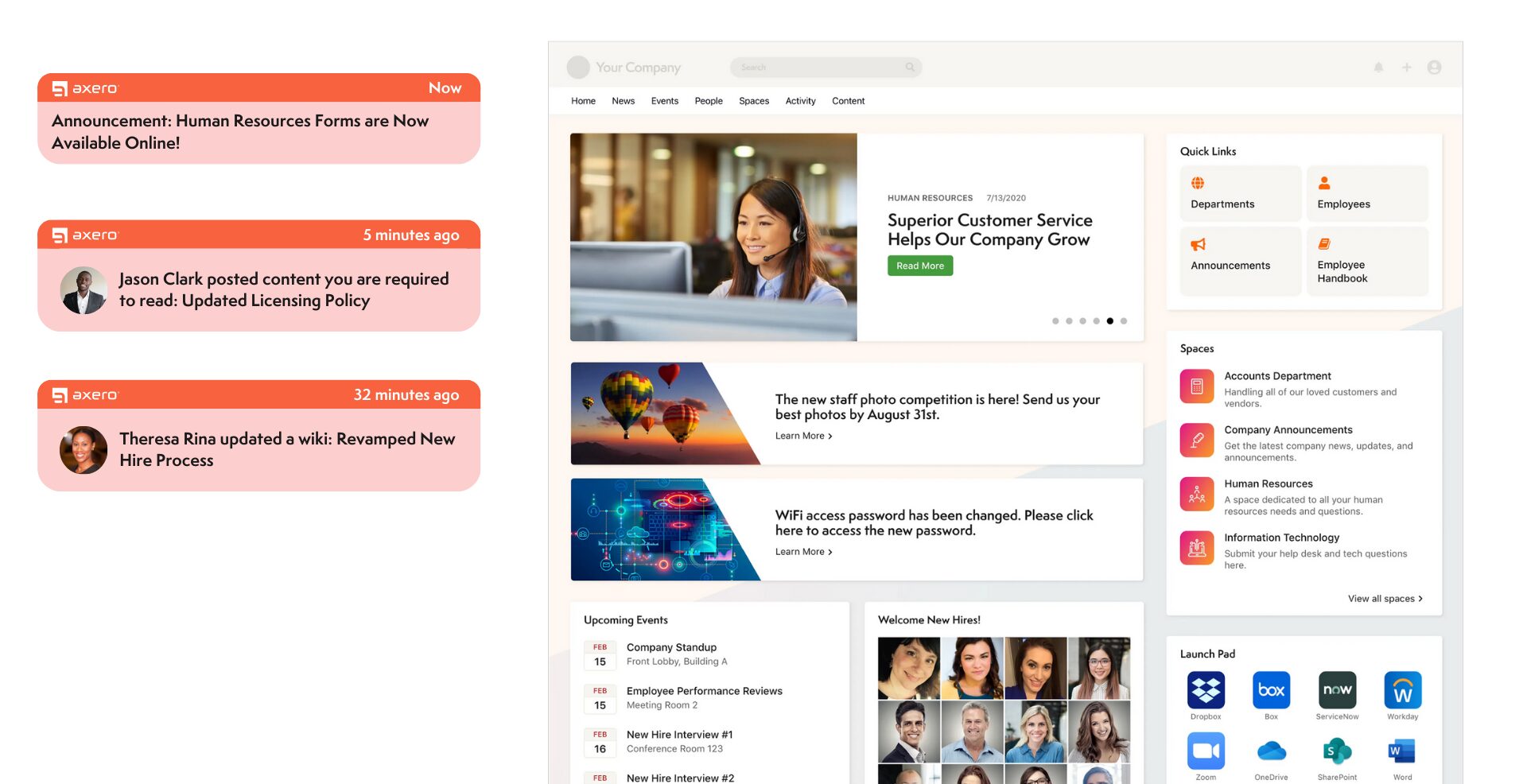
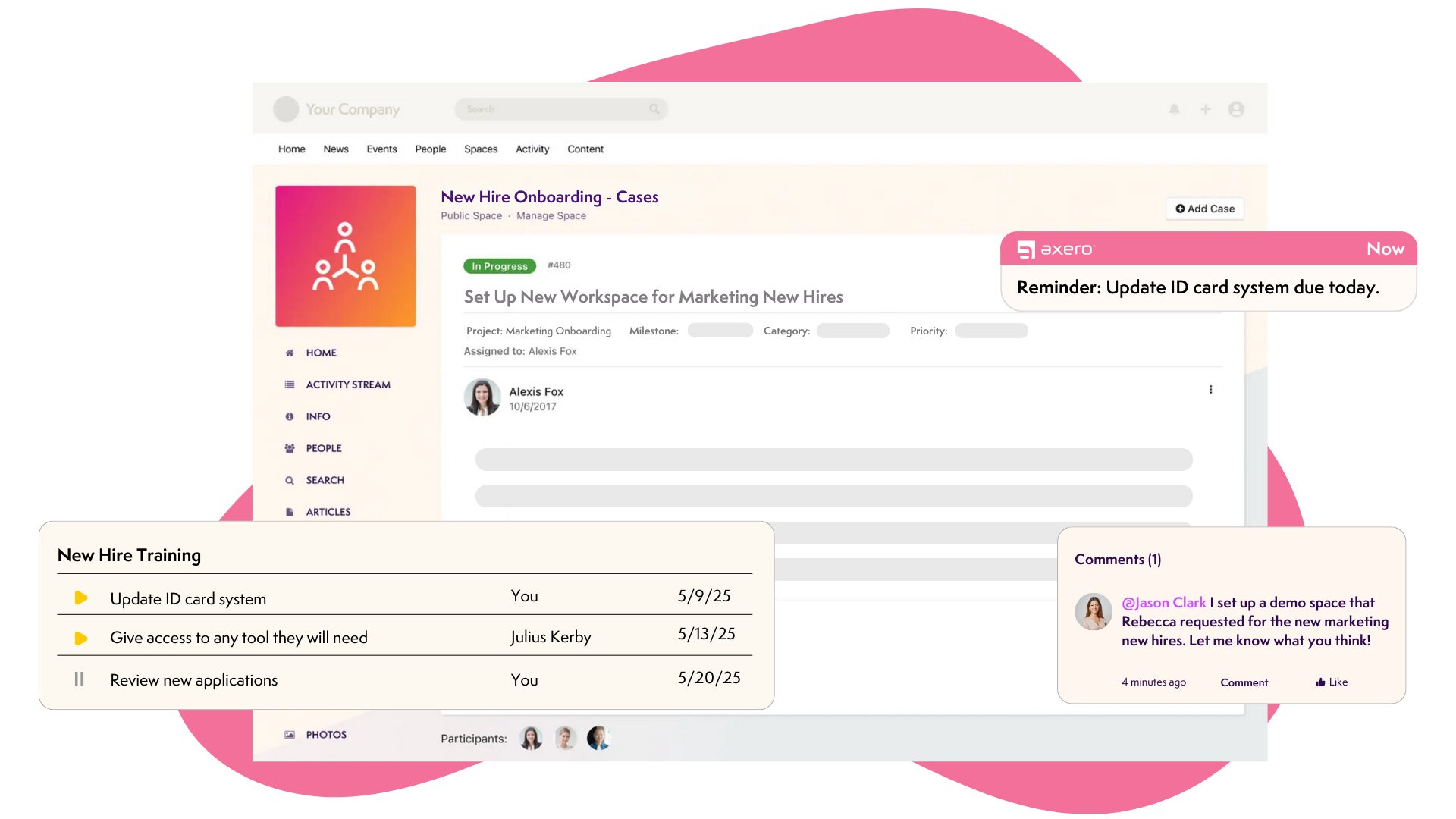
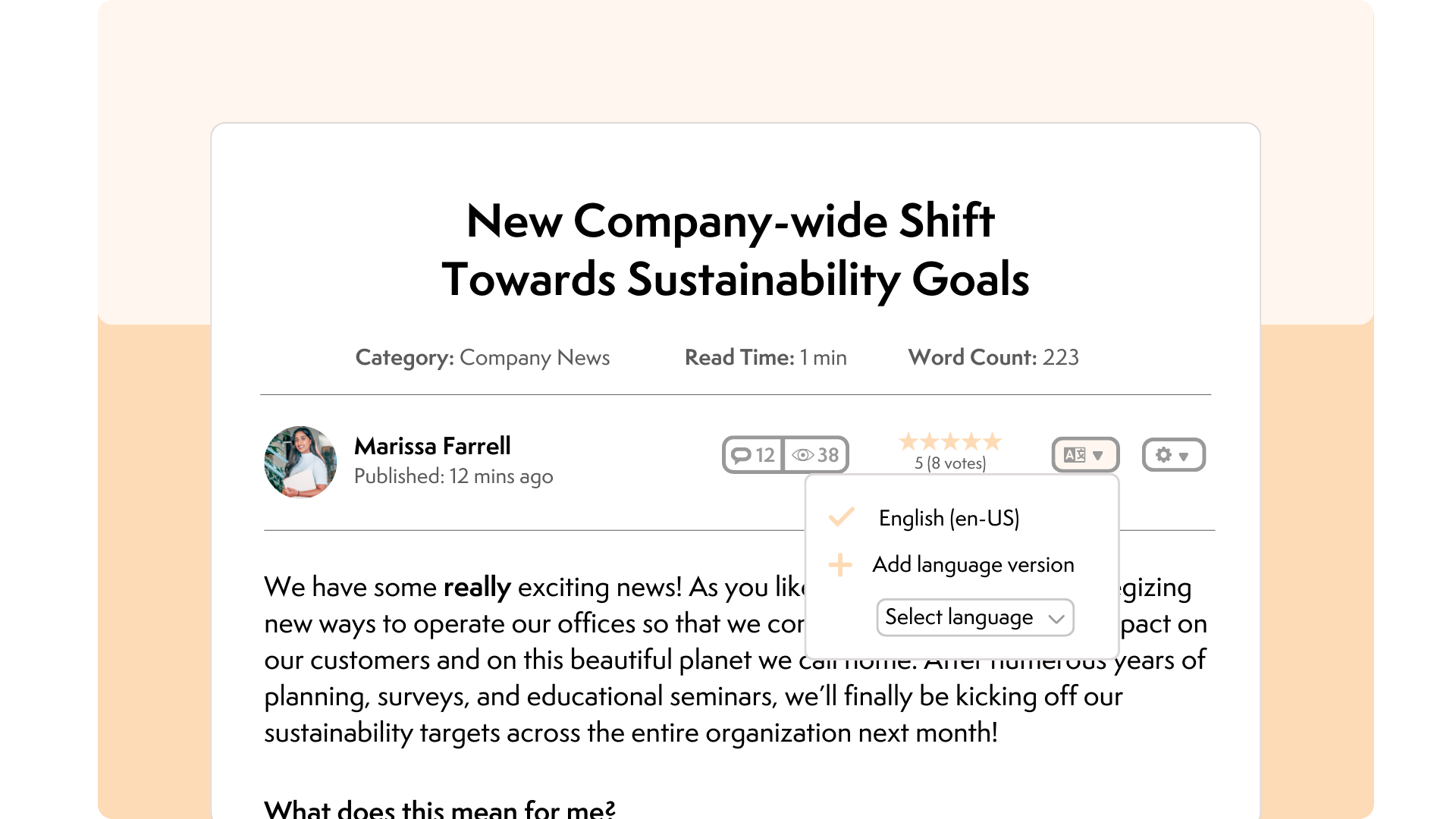

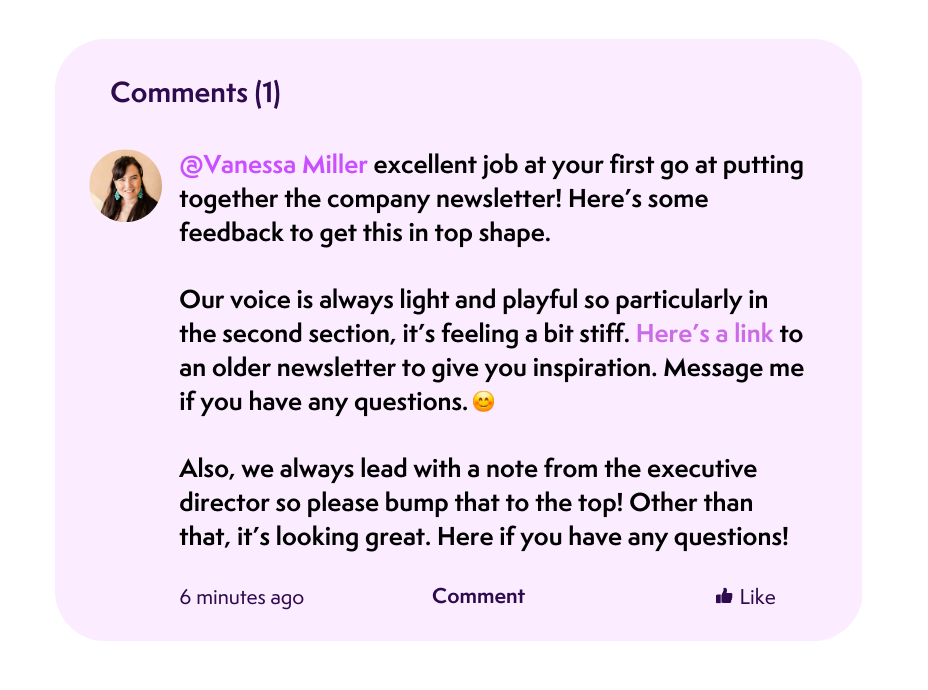

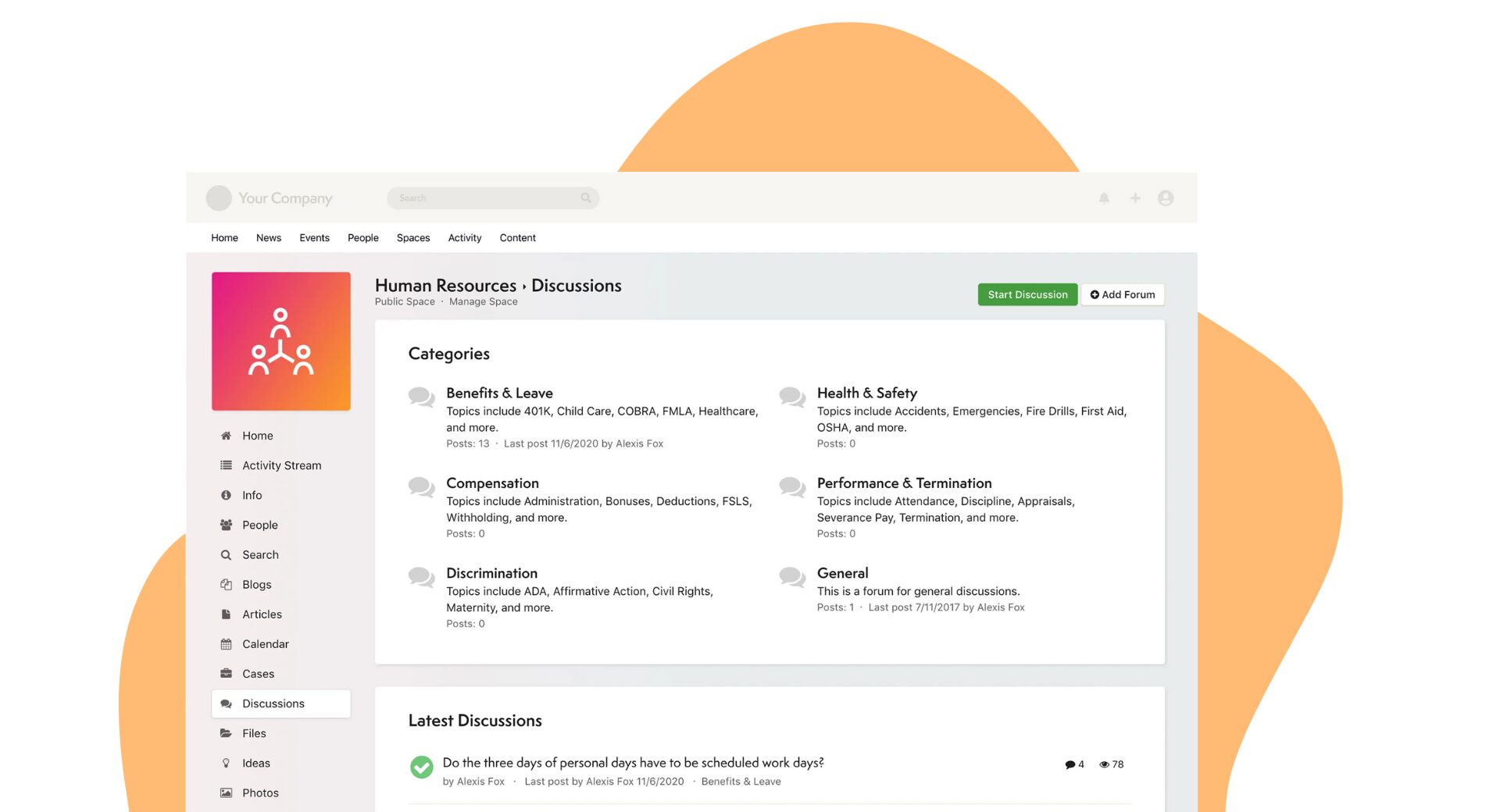
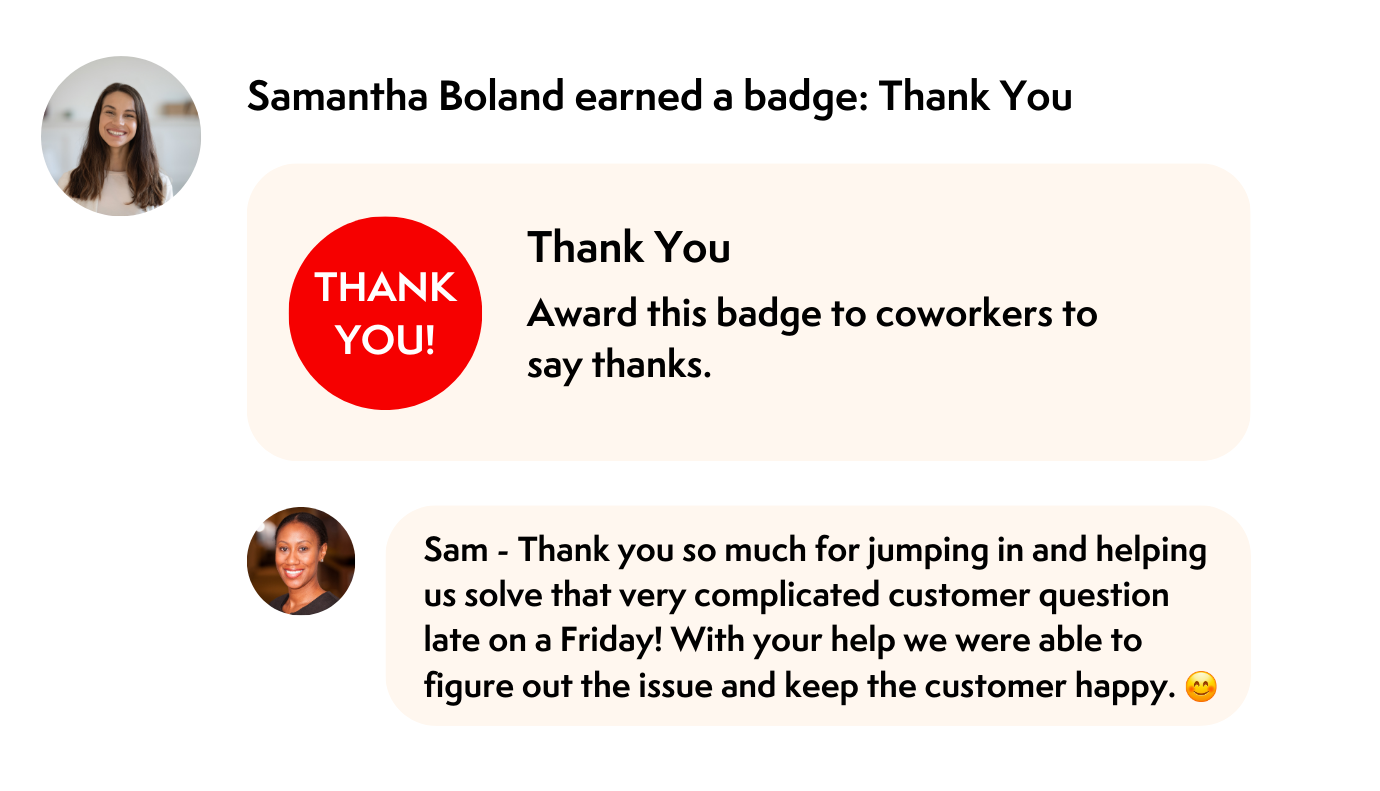












 info@axerosolutions.com
info@axerosolutions.com 1-855-AXERO-55
1-855-AXERO-55


